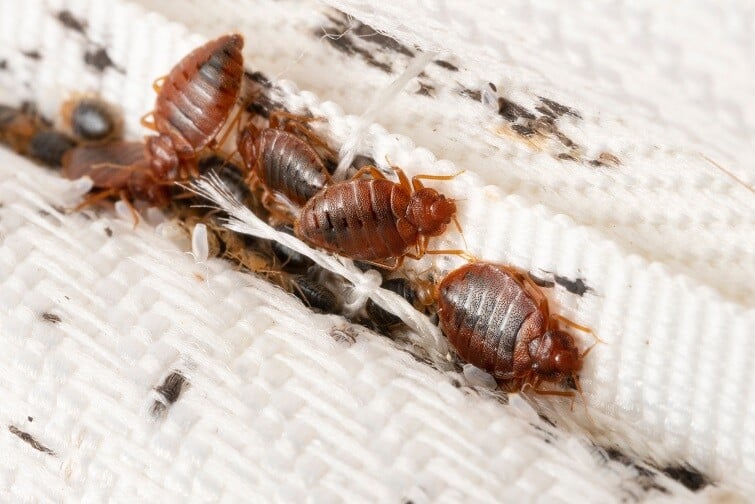Local Bed Bug Exterminator: DC Heat Treatment Providers Available
Local Bed Bug Exterminator: DC Heat Treatment Providers Available
Blog Article
Exploring the Scientific Research Behind Bed Bug Warmth Treatments as a Sustainable Parasite Administration Strategy
In the realm of bug management, the pursuit for sustainable and efficient remedies stays a consistent pursuit. One such approach that has obtained traction in the last few years is making use of heat therapies to combat bed insect problems. By utilizing the scientific research behind thermal fatality points for these consistent parasites, heat therapies supply an appealing option to traditional chemical-based methods. The details of how warm successfully removes bed bugs and the wider effects for sustainable bug monitoring practices make this a topic worth checking out additionally.
Bed Insect Warm Treatment Process

Thermal Fatality Factor for Bed Insects
Exposing bed insects to raised temperatures past their thermal tolerance array is important for achieving efficient eradication in warm therapy processes. The thermal fatality factor for bed insects describes the temperature at which these bugs can not endure. Research study shows that bed bugs start to die when exposed to temperatures over 113 ° F(45 ° C) for a sustained period. As the temperature level increases, so does the mortality price of bed pests. At around 118 ° F(48 ° C ), bed bugs start to pass away quickly, with a death price of nearly 99% within mins of direct exposure. This demonstrates the sensitivity of bed insects to high temperature levels and highlights the effectiveness of warm therapies in eradicating infestations. By reaching and preserving temperature levels above the thermal death point for bed insects, bug monitoring professionals can guarantee detailed removal of bed pest populations, including hard-to-reach areas where chemical treatments may be less efficient. Recognizing the thermal fatality factor for bed pests is important for executing successful warm therapy methods and attaining lasting parasite monitoring end results.
Benefits of Warm Treatments
Having developed the crucial thermal fatality factor for bed bugs, it is critical to now check out the substantial advantages that warm therapies offer in efficiently getting rid of these resilient insects. One of the key benefits is that heat can permeate deep right into gaps and fractures where bed pests conceal, guaranteeing that even the most hard-to-reach locations are warmed to lethal temperatures.
Additionally, warm therapies are ecologically pleasant and safe, making them a lasting parasite monitoring strategy. Unlike chemical pesticides, warm treatments do not leave damaging residues that can pose threats to human wellness or the setting. This facet is especially essential in sensitive atmospheres such as healthcare facilities, colleges, and residential locations where chemical usage might not be desirable.
In addition, heat therapies have a high success price in removing bed pest problems in a solitary treatment, decreasing the requirement for multiple check outs and reducing disruption to residents. This efficiency not official source just conserves time and cash however likewise offers comfort to those dealing with bed pest troubles.
Efficiency of Warm Treatment

Heat treatments have actually the included benefit of killing bed pest eggs, which are typically immune to conventional chemical therapies. On the whole, the effectiveness of heat treatments in removing bed pest problems makes them a sustainable and reputable bug monitoring approach.
Lasting Parasite Management Benefits
Carrying out sustainable insect management practices supplies lasting advantages for both the atmosphere and public health. By making use of approaches such as warm treatments for pest control, we can lower the dependence on damaging chemical pesticides that can have unfavorable effects on ecosystems and human wellness - bed bug heat treatment. Sustainable pest monitoring methods help in maintaining biodiversity by targeting certain insects without damaging non-target organisms, thereby keeping a balanced ecological community
Moreover, sustainable parasite management techniques add to the general wellness and wellness of the general public. By reducing direct exposure to harmful chemicals made use of in traditional insect control approaches, heat therapies provide a much safer choice for insect monitoring in domestic, business, and public spaces. This reduction in chemical use also assists in preventing pesticide deposits from infecting air, water, and soil, guarding environmental high quality.
Verdict
Finally, bed insect warmth therapies have been shown to be a sustainable and effective bug monitoring strategy. The thermal death point for bed insects makes them at risk to warmth treatments, which have various advantages over standard chemical therapies. The performance of heat treatments in eliminating bed insect invasions while lessening ecological influence highlights the potential of this method as a sustainable service for insect control.
The bed insect warm therapy process includes increasing the temperature level within ravaged locations more helpful hints to a degree that properly removes bed pests and their eggs. By getting to and keeping temperature levels over the thermal fatality point for bed insects, insect administration professionals can guarantee extensive elimination of bed bug populations, consisting of hard-to-reach locations where chemical therapies might be less effective. One of the primary benefits is that warmth find can permeate deep into cracks and crevices where bed pests hide, guaranteeing that even the most hard-to-reach locations are warmed to deadly temperatures. Unlike chemical treatments that might leave behind immune populations, heat therapies use a eco friendly and non-toxic remedy that can permeate deep into furnishings, wall surfaces, and other hard-to-reach locations where bed insects hide.
The thermal fatality factor for bed bugs makes them at risk to warmth treatments, which have numerous benefits over conventional chemical treatments.
Report this page